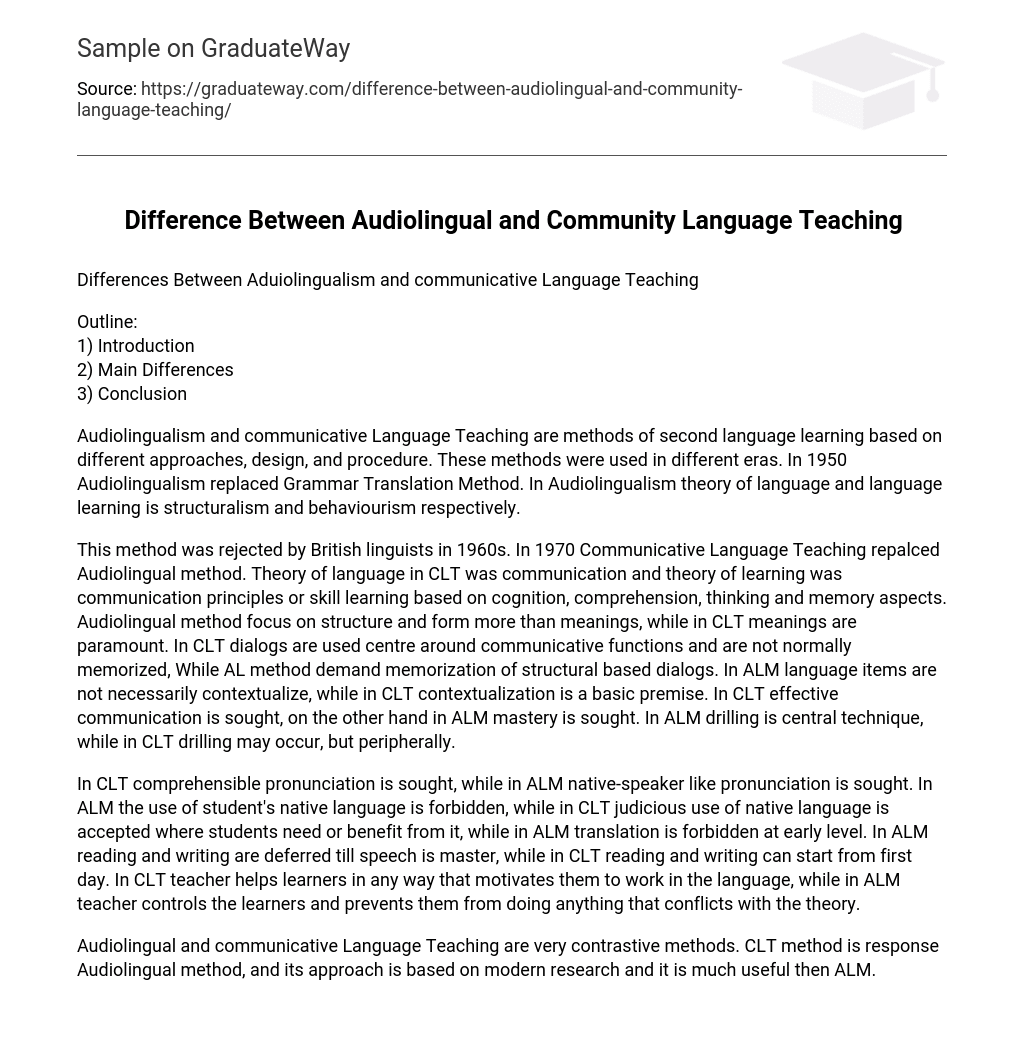Differences Between Aduiolingualism and communicative Language Teaching
Outline:
1) Introduction
2) Main Differences
3) Conclusion
Audiolingualism and communicative Language Teaching are methods of second language learning based on different approaches, design, and procedure. These methods were used in different eras. In 1950 Audiolingualism replaced Grammar Translation Method. In Audiolingualism theory of language and language learning is structuralism and behaviourism respectively.
This method was rejected by British linguists in 1960s. In 1970 Communicative Language Teaching repalced Audiolingual method. Theory of language in CLT was communication and theory of learning was communication principles or skill learning based on cognition, comprehension, thinking and memory aspects. Audiolingual method focus on structure and form more than meanings, while in CLT meanings are paramount. In CLT dialogs are used centre around communicative functions and are not normally memorized, While AL method demand memorization of structural based dialogs. In ALM language items are not necessarily contextualize, while in CLT contextualization is a basic premise. In CLT effective communication is sought, on the other hand in ALM mastery is sought. In ALM drilling is central technique, while in CLT drilling may occur, but peripherally.
In CLT comprehensible pronunciation is sought, while in ALM native-speaker like pronunciation is sought. In ALM the use of student’s native language is forbidden, while in CLT judicious use of native language is accepted where students need or benefit from it, while in ALM translation is forbidden at early level. In ALM reading and writing are deferred till speech is master, while in CLT reading and writing can start from first day. In CLT teacher helps learners in any way that motivates them to work in the language, while in ALM teacher controls the learners and prevents them from doing anything that conflicts with the theory.
Audiolingual and communicative Language Teaching are very contrastive methods. CLT method is response Audiolingual method, and its approach is based on modern research and it is much useful then ALM.





